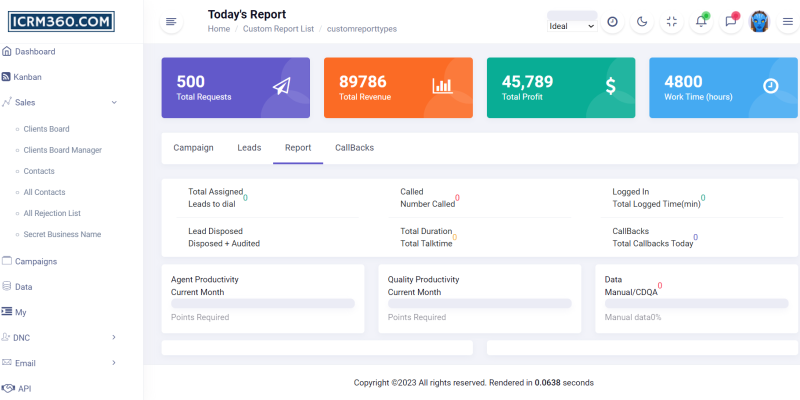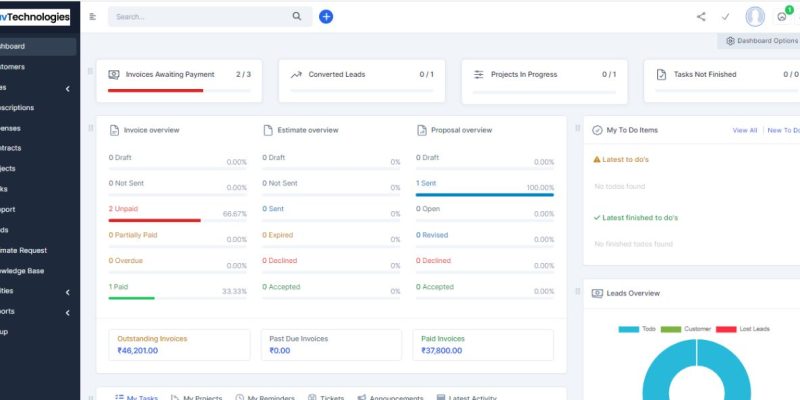16 Must-Haves to Create An Effective Website For Your Business
I collaborate with numerous web designers as a content writer on their customer projects. Additionally, I assist some companies with an assessment of the content on their websites and provide new visitors with guidance and website recommendations so they won’t get lost in the technical speak.
I can promise you that sometimes we overlook the most basic of instructions because I’ve worked with websites for almost ten years.
Check out some advice to keep in mind if you’re thinking about creating your own website.
1—Purchase A Domain Name
You may purchase your domain name directly from platforms like WordPress, Weebly, Wix, and Squarespace, as well as through popular websites like GoDaddy.com and Namecheap.com.
2 — Choose A Good Web Host
WordPress, Weebly, Wix and Squarespace — I’ve named them.
But how do you decide which is the best?
There are many competent web designers out there who can give you advice on which one is best for your company. WordPress and Weebly are my favourites, with the first providing all the features required for a website (you only need to be a little tech skilled, or pay someone!). The second is a plug-and-play host that I prefer because it is easy to use and uncomplicated. Although Medium is also an excellent option for that, I’ve worked on Wix as well and highly recommend it if you’re considering starting a blog.
3 — Design Your Wireframe

Describe a wireframe. In essence, it is a web page layout that displays the content you wish to see on it.
The aim is to sketch out how your website will seem before beginning to develop the real parts, whether you want to call it a sketch, plan, or user interface guide. You may then locate the ideal locations for your text, graphics, and call-to-actions (CTAs) by imagining the procedure or route that a visitor will take.
Have you created one for another person or for you personally? In the comments area below, please share your website!
4 — Install the right plugins
Which apps and plugins can help make your website more fluid now that you have your wireframe prepared?
In all honesty, it depends on the web hosting service you select. Although other platforms aren’t far behind, you’re likely to find a lot more plugins if you choose WordPress. On my website, I use plugins for call-to-action buttons, sliders for testimonials, and various forms.
❗Pro tip: Don’t forget to integrate other tools into your website. Like your email marketing subscription form, or Google form, and if you’re running an e-commerce website, there are also plugins to help you with that.
5 — Prepare each page’s content
Do you have material ready to write for your website?
We always work on a set number of pages if I have a customer that needs assistance with site text. The safe range is 4 to 5 pages, with standard sections like Home, About, Services, and Contact. You can arrange objects in the appropriate pages with the aid of a wireframe, but at this point you ought to be prepared to create your content.
Think about:
🌟 The message you want to reach out to your audience
🌟 The style of writing/tone of voice (informal/formal)
🌟 The length of each page. Typically, regular home pages are not as long as one landing page that sell a particular product/service.
My preferred website page to work on? the blog and “about” sections! Writing profiles is a lot of fun because it allows you to share insights with readers who will learn about you via your blog postings.
6 — Finalise each web page
You are prepared with your wireframes, plugins, and content. Next, what?
Complete each page on your website. Get an editor to review your content, test it with some of your clients and solicit feedback, then make any necessary adjustments by adding images and trying out other layouts.
Work separately and thoroughly on each web page, but make sure they all have a similar objective!
7 — Include a CTA in each page
Think you’re ready to publish your website?
Hold on. You may have finalised your content but you need to do a double — nay, triple check to make sure that each page has a call to action.
Some common call to action include:
1. Follow us on social media
2. Join our Facebook group
3. Subscribe to email updates
4. Book a call
5. Purchase a product
6. Contact for more details
Which one are you going for?
8 — Have a FAQ page

Why is a FAQ page necessary?
I might hesitate to buy from you if your service or product isn’t clear to me as a customer. Before I decide to make a purchase, having a FAQ page helps me find the answers to some of the urgent questions I have in order to trust you and saves me time from emailing/contacting support.
A FAQ page saves you time by preventing you from having to repeatedly respond to the same questions as a business owner, especially if you’re a “solopreneur.”
Some of the most popular questions asked, that you can already prepare answers for, include:
✨ Payment methods
✨ Delivery methods (digital/offline shipping)
✨ Delivery timeframe (digital/offline shipping)
✨ Safety/security/privacy questions
✨ Contact details
What are some questions your clients commonly ask?
9 — Include all your testimonials
Social evidence is crucial. Utilise the endorsements and reviews you gathered and display them on your website.
More than 80% of buyers trust other user evaluations, according to a recent Hubspot post, and they really read these reviews before making a purchasing choice.
10 — Have a creative about page
Do you struggle with talking about yourself?
Writing about my personality and the work I loved doing was one of the things I found the most difficult when I first started out. I wrote a tonne of about pages that I then deleted or altered.
I’ve gotten very good at this today. Even other business owners who have great ideas but struggle to put them down on paper ask me to create their profiles.
Some tips for a good about page:
✨ Show facts
✨ Display your personality
✨ Tell your customers how you can help them
✨ List any awards, qualifications (relevant ones only)
✨ Make a connection
11 — Add in a form for email opt-in
This, in my opinion, is one of the most crucial calls to action a website ought to have.
Why?
✨ An email list will assist you gather people who are truly interested in your business if you are just starting out.
✨ An email list can assist you promote a service or product to your supporters later when you are ready if you don’t already have one.
An email list can assist you in connecting with genuine supporters and customers who are already interested in your goods.
12 — Have a contact page
It’s really simple with this one.
How can one get in touch with you? Have a contact form where people can reach you if you don’t want to publish your email address for privacy reasons.
Name, email address, and possibly a drop-down menu for the service they’re seeking for, with a lengthy remark box underneath, are fields that your contact form should include.
Before releasing your website, don’t forget to try out your contact form!
Add a live chat or chat box to your website to enable speedier customer communication.
13 — Create and manage a blog
The blog is my fave section of any website.
Since I’ve been writing blogs for so long, I’m aware that having blogs on a website aids in numerous aspects of marketing, like informing your audience, generating traffic, and even inspiring the development of leads.
14 — Include all icons for social media
Do you have connections to your social media profiles on your website?
Add it if you don’t already have it. Why? Since you generally update social media more frequently than you update your website (unless you write), you can just add a fresh feed so that visitors may return and see your latest information instead of constantly altering your website.
Including social network icons on your website might encourage users to follow your profiles and expand your following.
15 — Submit your website to google
Is the debut of your website imminent? Will you only wait for people to arrive?
A good idea would be to submit your website to Google. When I work with web designers, I notice that they always act in this way. You can submit your website using Google Search Console if you’re launching a new one.
Do you want to learn how to do this? Okay, I’m sorry, but I’m powerless to assist. I’m not an expert website developer. Sorry!
Read this article for help: How to Submit Your Website to Google (And Why It Matters)
16 — Install Meta (Facebook) pixels
Put in a Meta pixel so you can later remarket to your target.
Why? Because even with a fantastic website, you could occasionally struggle to turn visitors into paying clients. particularly if you don’t currently have a lead magnet or a product.
When you have a more tangible image or the resources to do so, you may also use pixels to draw in your audience and “sell” or “advertise” to them.
Don’t waste time by not capturing your target audience.









